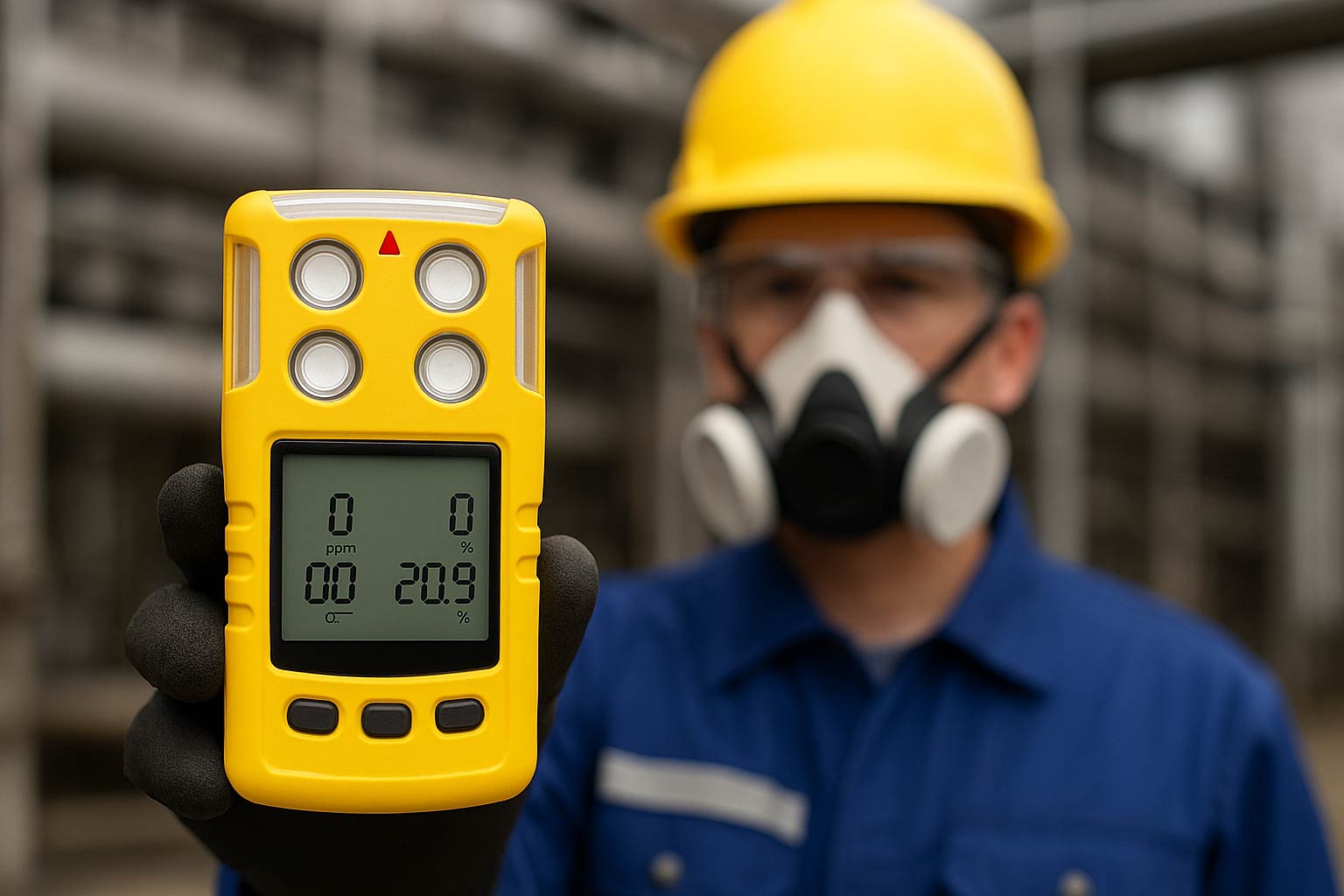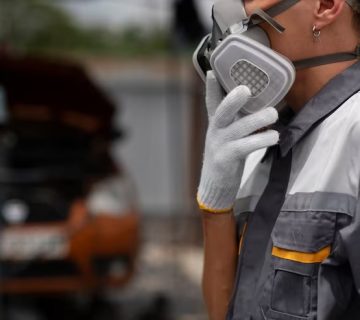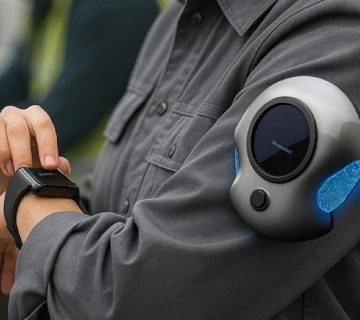The importance of detecting hazardous gases in real-time has never been more critical, particularly in industries like oil and gas, chemical processing, mining, agriculture, and public utilities. While fixed gas detection systems provide essential coverage for large or enclosed areas, they cannot Provide the field personnel, inspectors and first responders the mobility and flexibility They need portable gas detectors is where they become a necessity. These handheld or wearable meters are intended to identify toxic/flammable gases in different kinds of surroundings, thus triggering an alarm and avoiding death by exposure or explosion.
For better maintenance of workplace safety and regulatory compliance purposes with human life-saving portable gas detectors are considered indispensable as industries grew increasingly more complex and environmental regulations became more stringent.
Portable Gas Detector
A portable gas detector is a compact, mobile device that measures the concentration of hazardous gases in real-time. Unlike stationary monitors, portable detectors can be carried or worn by individuals working in potentially dangerous environments. These devices are used extensively in confined spaces, tanks, silos, underground tunnels, and remote field operations.
Portable detectors are generally available as multi-gas varieties, which can detect carbon monoxide (CO), hydrogen sulfide (H₂S), oxygen (O2), methane (CH4) as well as volatile organic compounds (VOCs). The market has also widened to multi-gas detectors that enable monitoring of up to six gases in parallel, thus being a perfect solution for diverse hazard environments.
Not only does this ability to rapidly detect and correct gas leak or build improves safety, it allows industries to reduce lost revenues and expensive evacuations (marshalling yards) as well as legal liability.
Portable Ammonia Gas Leak Detector
Ammonia (NH₃) is commonly used in industrial applications such as refrigeration, fertilizer production, and pharmaceuticals. However, its toxic nature makes it a serious safety concern in occupational environments. A portable ammonia gas leak detector is specifically designed to help detect and alert users of ammonia presence before it reaches hazardous levels.
| Aspect | Details |
| Industrial Use | Fertilizer production, refrigeration systems, pharmaceuticals |
| Health Risks | Respiratory irritation, eye damage, skin burns, chemical asphyxiation |
| OSHA Permissible Exposure Limit | 50 ppm (8-hour time-weighted average) |
| Typical Detection Threshold | As low as 25 ppm, for early warning and safety |
| Application Environments | Storage tanks, cold rooms, chemical plants, ammonia pipelines |
| Importance | Protects workers, enables early leak detection, supports regulatory compliance |
These portable detectors are crucial for plant workers, technicians, and emergency responders. By offering immediate alerts and high sensitivity, they prevent overexposure and allow rapid evacuation or containment in case of a leak.
Portable Ammonia Gas Leak Detector
Ammonia (NH3) is a large-scale industrial chemical for making fertilizers, cooling and also to produce pharmaceuticals. Yet its toxicity and volatility make it a significant workplace danger. This portable ammonia gas leak detector is designed to measure the amount of ammonia gas in applications where a leak may be occurring such as storage tanks, refrigeration systems or chemical production areas.
High concentrations of ammonia can lead to respiratory distress, eye damage, and chemical burns. The carcinogenic compound ammonia has a permissible exposure limit (PEL) of 50 parts per million for an 8-hour day as per OSHA.
a) Portable ammonia gas detectors are calibrated to read all levels of trace ammonia, and often trigger at as low as 25 ppm. This equipment is critical for timely physical response from workers in the plant, safety inspectors and maintenance personnel should such a leak occur.
Portable Gas Detector Battery
The battery is a fundamental component of any portable gas detector. Since these devices are often used in the field without access to fixed power sources, battery reliability directly impacts safety and operational efficiency.
There are generally two types of batteries used:
- Rechargeable lithium-ion batteries, offering long runtime and quick charging, are commonly found in modern detectors.
- Alkaline batteries, used in lower-cost models, are disposable but still effective for short-term use or low-frequency operation.
Battery Life is affected by the number of sensors, screen brightness, data logging, environmental temperature etc. High-powered solutions can maintain operation for 18-24 hours on a full charge The most advanced versions of course have battery status, power-saving modes and low battery alert systems, to make sure the device will never fail at the most inappropriate time.
Where companies have strict safety protocols, it is important to pick battery life and fast charging protocol detectors so that continuity of safety and additional compliance gets maintained by these detectors.
How Toxic Alert Aligns with Portable Gas Detectors
While portable gas detectors provide crucial protection against environmental hazards, Toxic Alert takes this capability a step further by integrating gas detection, vital sign monitoring, and real-time communication into a single, wearable system. Embedded into clothing, Toxic Alert eliminates the need for bulky handheld devices, offering hands-free, continuous monitoring for both environmental and physiological threats.
Like a high-end Walk’s’ Protect, Hazchem Portable Muta-Disposable alerts its operator to more than one toxic gas like ammonia, carbon monoxide or hydrogen sulfide. But it adds blood oxygen and heart rate detection, which elevates the in-depth safety of critical environments. Radio transmission, Bluetooth connectivity and modular sensor design make Toxic Alert ideal for industrial workers, alive response or gas laid individuals.
Truly far in advance of any simple (portable) gas detector is the integration of environmental safety & health technologies with Toxic Alert. It does not just tell users of the danger but also measures in real-time how their bodies are responding allowing for faster, more timely decisions when every second counts.








No comment